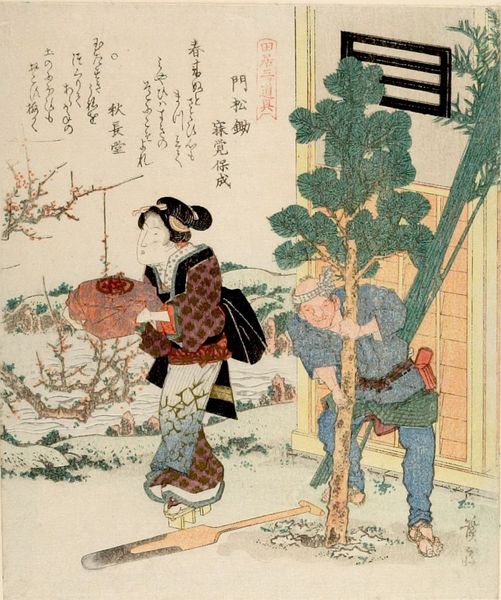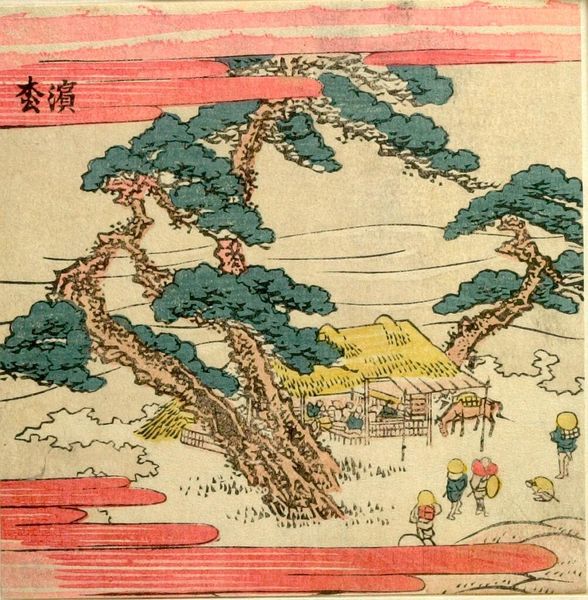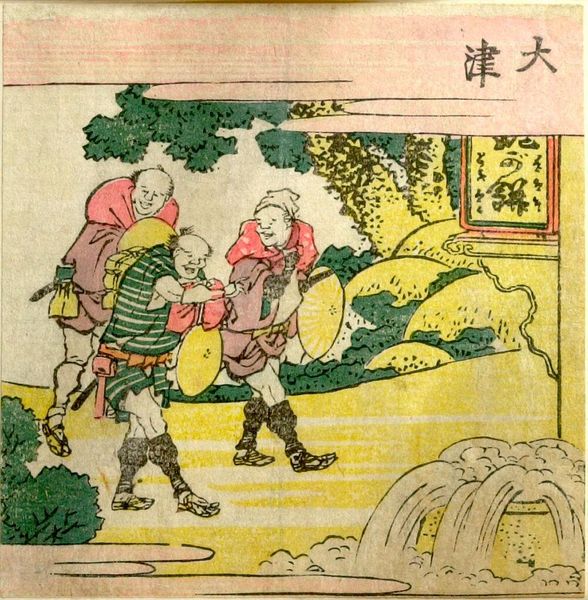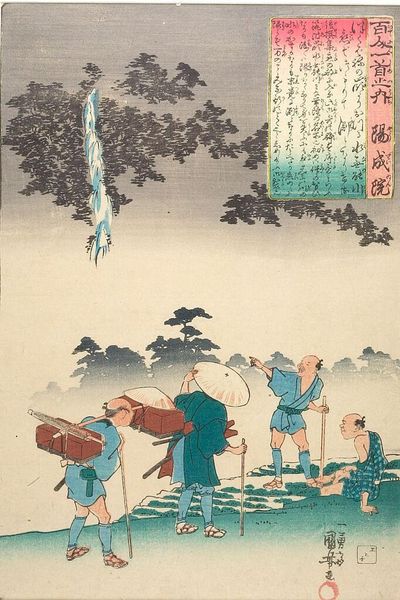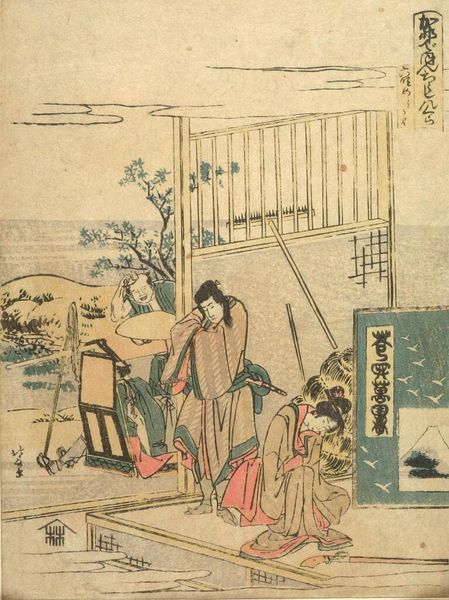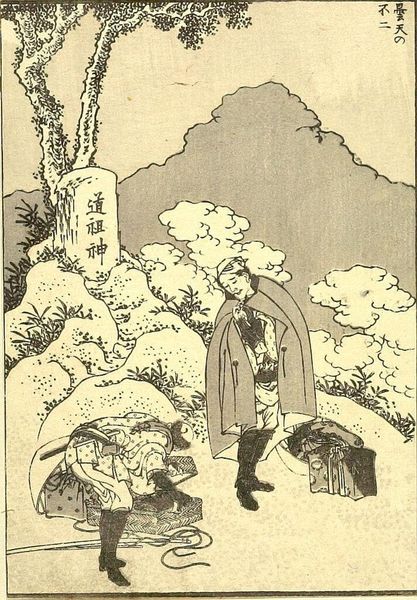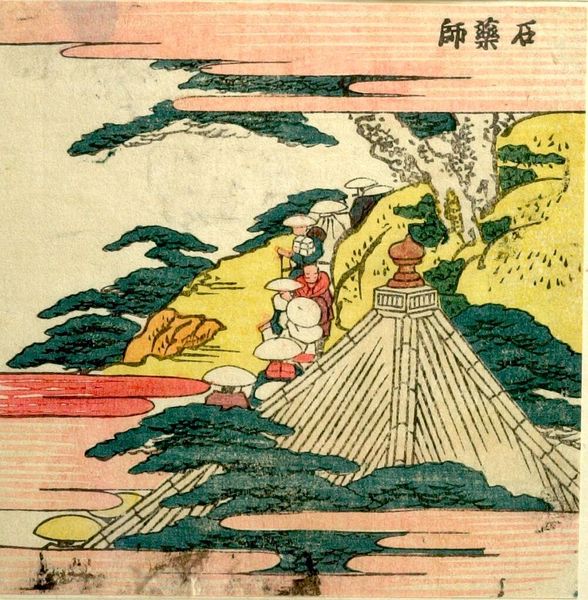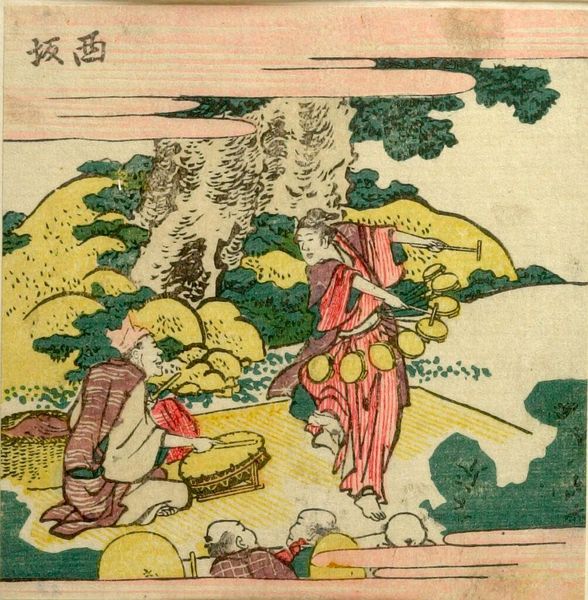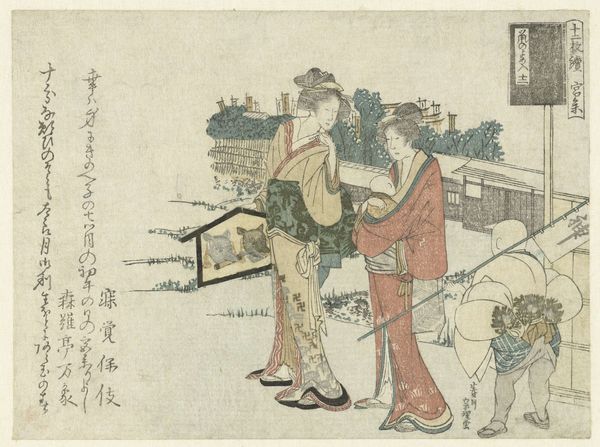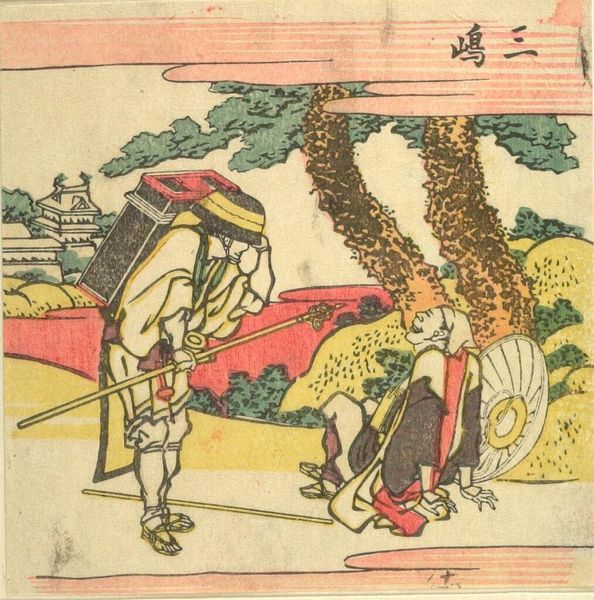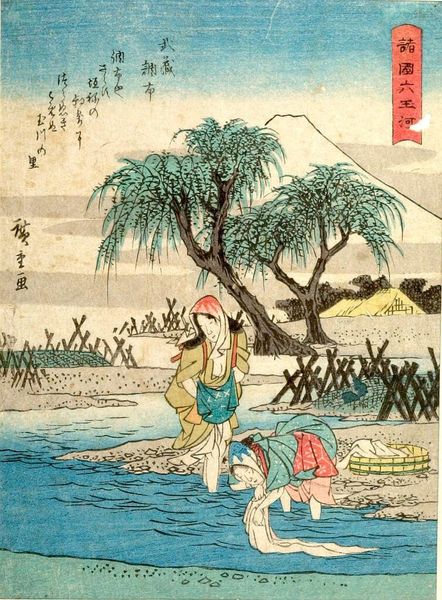
Fujieda, Fifty-three Stations of the TÅkaidÅ (Fujieda, TÅkaidÅ gojÅ«san tsugi), detached page from The Fifty-Three Stations of the TÅkaidÅ: A Picture Book of Highway Bells (TÅkaidÅ gojÅ«san tsugi: Ehon ekiro no suzu) c. 1808 - 1813
0:00
0:00
Dimensions: Paper: H. 22.3 cm x W. 16.2 cm (8 3/4 x 6 3/8 in.)
Copyright: CC0 1.0
Curator: Hokusai's "Fujieda," a detached page from *The Fifty-Three Stations of the Tōkaidō: A Picture Book of Highway Bells*, presents a serene, if somewhat arduous, journey. Editor: It feels like a snapshot of everyday life, yet there's a striking imbalance. The travelers seem burdened compared to the delicate cherry blossoms. Curator: The printmaking process, likely woodblock, allowed for mass production and circulation. It democratized art, making these scenes accessible to a wider audience beyond the elite. Editor: It's compelling to consider how these images shaped perceptions of travel and labor. The woodblock printing process itself became part of this narrative, intertwining artistic creation with social and economic structures. Curator: I agree. The labor involved in the production of the print mirrors the physical labor depicted in the scene itself. We should notice the details of daily routines and consider the environmental footprint of art and consumption. Editor: Right, the materiality of the print invites critical discussions about cultural representation, power dynamics, and even sustainability in artistic production. Curator: Thinking about Hokusai's series in this context, you get such a different understanding of both its art-historical significance and the social history of 19th century Japan. Editor: Indeed, viewing "Fujieda" through these dual lenses enriches our understanding, connecting art to the human stories it reflects and the world in which it was created.
Comments
No comments
Be the first to comment and join the conversation on the ultimate creative platform.

